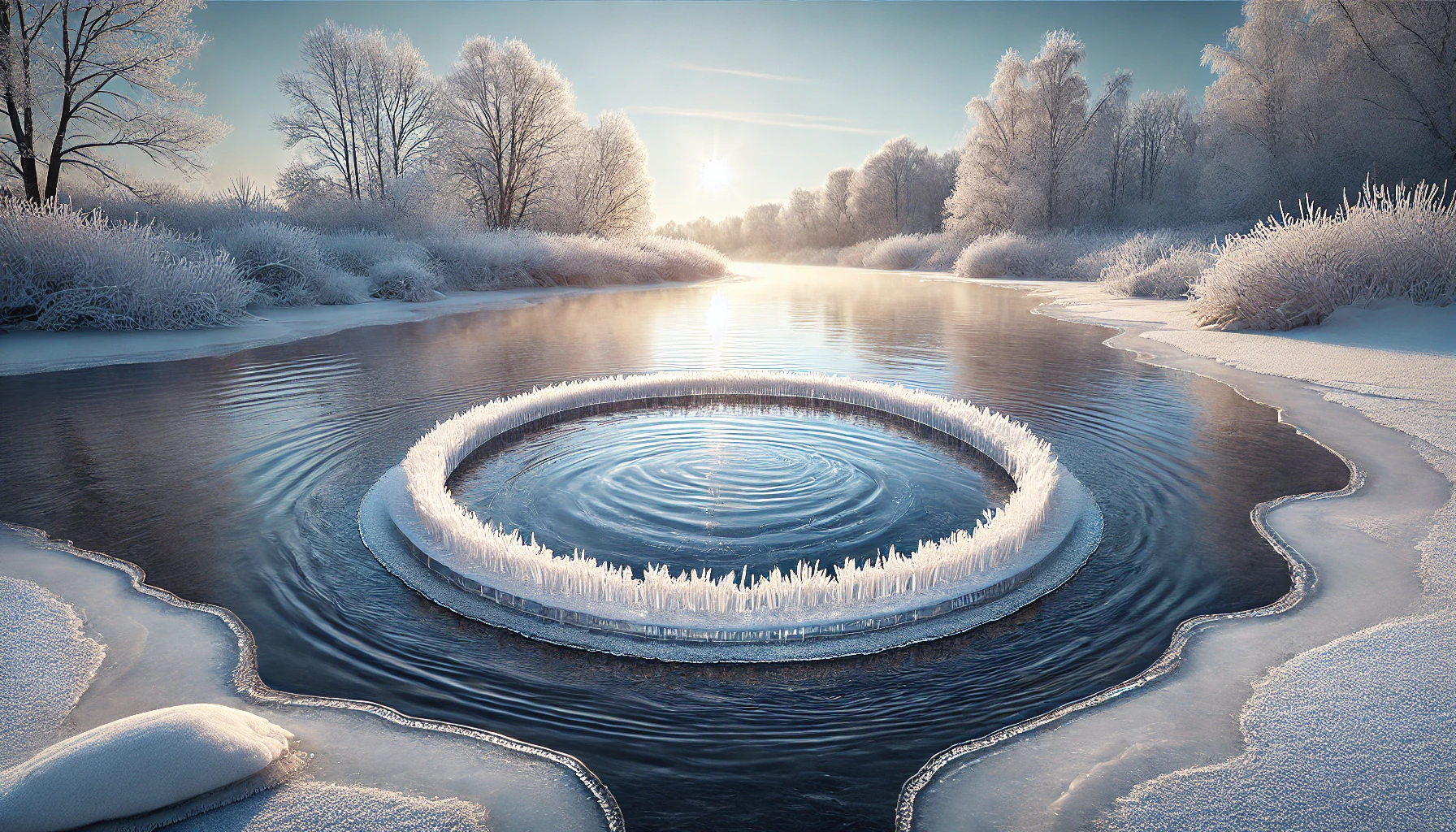Ice circles, also known as ice discs or ice halos, are a rare and mesmerizing natural phenomenon that captivates those lucky enough to witness them. These perfectly round formations of ice float gently in rivers, streams, or ponds, creating a striking visual display of nature’s ability to craft intricate shapes even in the coldest of environments.
What is an Ice Circle?
An ice circle is a large, rotating disc of ice that forms on the surface of a body of water, typically in colder climates. They can vary in size, with some reaching several feet in diameter. The process of forming these circles is fascinating and somewhat mysterious, involving a combination of water currents, freezing temperatures, and natural processes that result in the smooth, circular shape.
The formation of an ice circle is primarily influenced by a combination of environmental factors. In a slow-moving current, small chunks of ice are often carried by the water, and through friction, they begin to align themselves into a circular shape. As the edges of the ice pieces meet, they form a larger, coherent disk that continues to rotate due to the current, further perfecting its round shape.
How Do Ice Circles Form?
Ice circles typically form in rivers or streams where the water is moving slowly enough for ice to accumulate. The key factors that contribute to the formation of these ice formations are:
- Slow Water Currents: The water must move slowly enough to allow chunks of ice to gather in one place, but not so quickly that the ice is swept away.
- Temperature: Cold temperatures are necessary for the ice to form in the first place. As the temperature drops, small patches of ice begin to freeze on the surface of the water.
- Friction and Rotation: As the ice pieces float and rotate in the current, friction causes them to rub against each other, which smooths and shapes them into a perfect circle.
Over time, the ice circle continues to grow and spin, driven by the current beneath it. The circular motion helps it become smoother and more symmetrical as it maintains its rotation.
Where Can You See Ice Circles?
Ice circles are most commonly found in colder regions, especially in areas with slow-moving rivers and streams. They are often spotted in northern climates, including parts of Scandinavia, Canada, and the northern United States. While they are relatively rare, they can also be seen in certain mountain streams and freshwater lakes in winter.
One of the most famous locations to witness ice circles is the Lake Baikal in Siberia, which is known for its natural ice formations, including massive ice discs that have been observed in the area.
The Beauty and Science of Ice Circles
The allure of ice circles is not just in their rarity but also in their natural beauty. The way the ice catches the light, creating a shimmering effect, and the contrast of the crisp white snow against the dark, still water, creates a serene and almost otherworldly scene.
From a scientific perspective, ice circles also provide insight into fluid dynamics, as they offer a unique visual representation of how water currents and ice interact. Researchers study ice circles to better understand water flow, temperature dynamics, and how natural systems work together to create such mesmerizing structures.
Why Are Ice Circles Important?
Though they are primarily appreciated for their aesthetic value, ice circles have significance beyond their beauty. In many cultures, they are seen as signs of nature’s balance and the changing of seasons. Some also view them as symbols of harmony and perfection, as the precise circular shape is a rare feat of nature.
For scientists, ice circles serve as an interesting phenomenon to study, as they highlight the complexities of fluid mechanics, thermodynamics, and the ways in which the environment can shape the natural world.
How to Photograph Ice Circles
For photographers, ice circles provide an excellent opportunity to capture the interplay of light, water, and ice. The best time to photograph them is in the late afternoon or early evening, when the light reflects off the ice and creates a sparkling, ethereal effect. It’s important to be patient and wait for the right moment when the ice circle is positioned perfectly within the frame.
Conclusion: Nature’s Frozen Wonders
Ice circles are a testament to the fascinating and intricate processes at work in the natural world as the frozen bubbles are. They remind us that even in the coldest, most remote corners of the Earth, nature is constantly creating extraordinary phenomena. Whether you’re lucky enough to witness one in person or simply appreciate their beauty from afar, ice circles are a stunning example of the wonders that the world has to offer.


1 thought on “The Fascinating Phenomenon of Ice Circles: Nature’s Frozen Masterpieces”